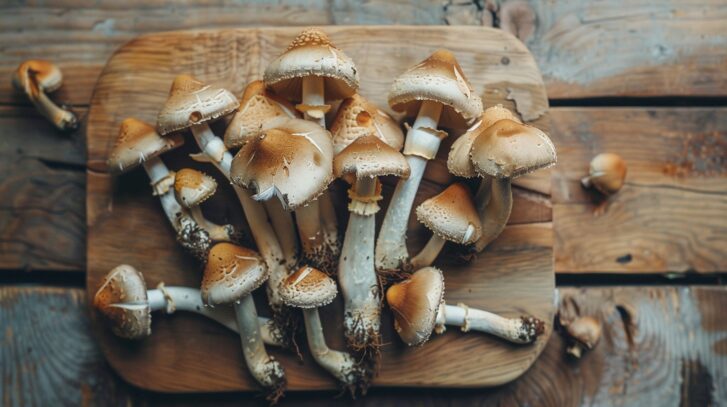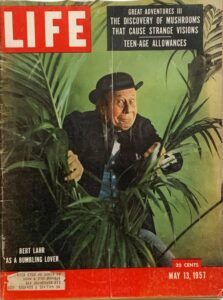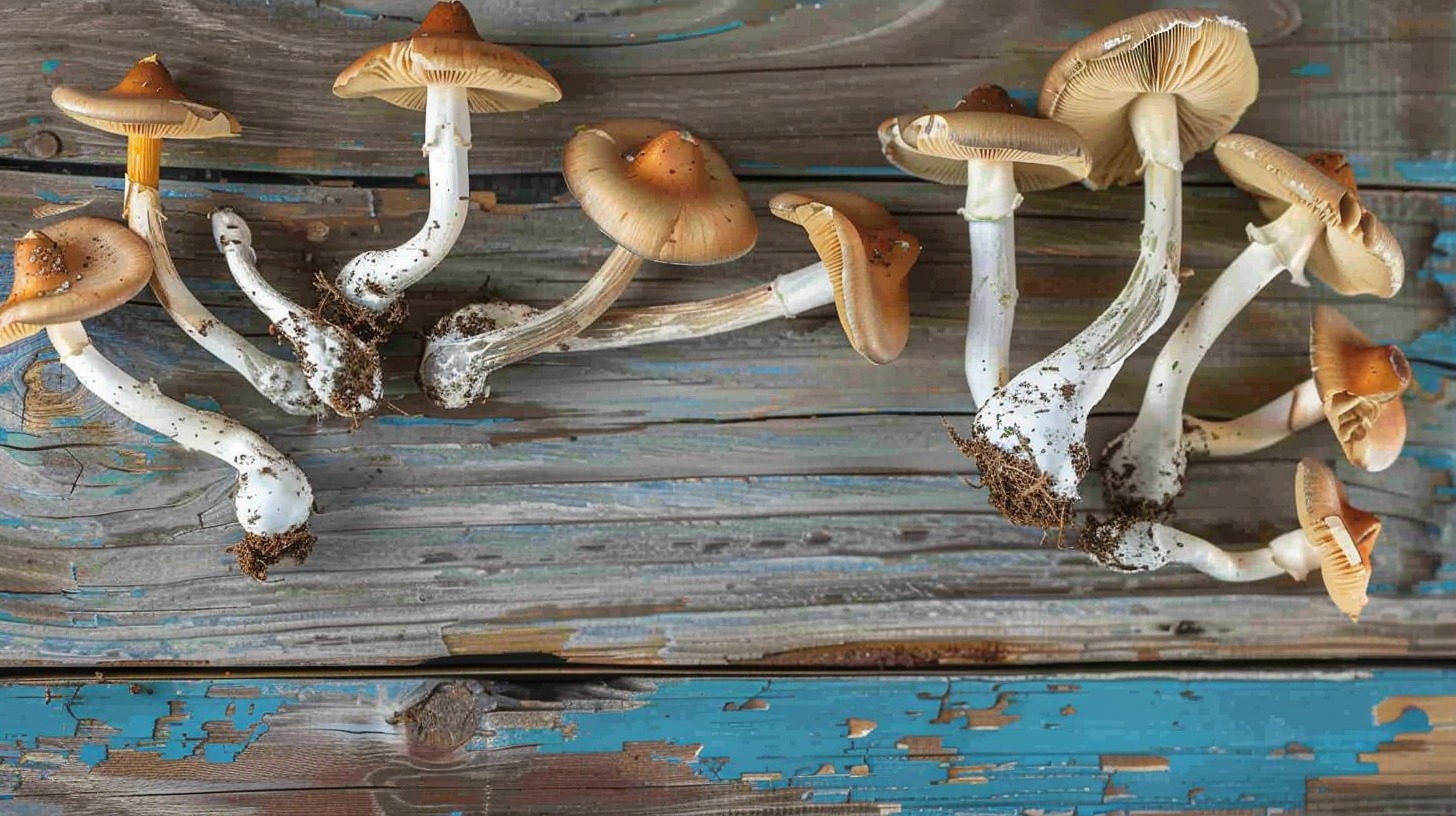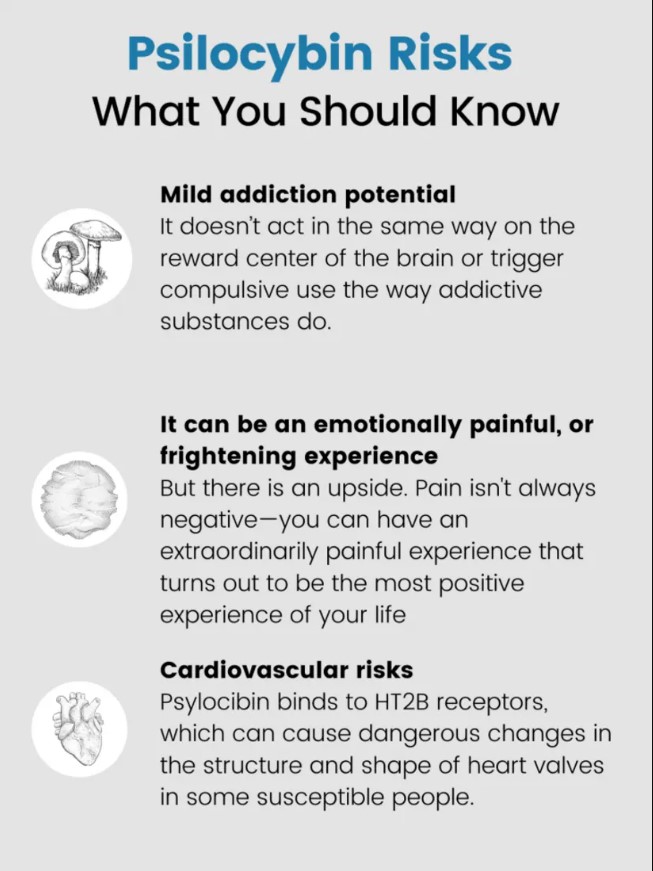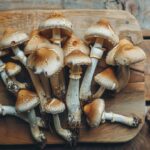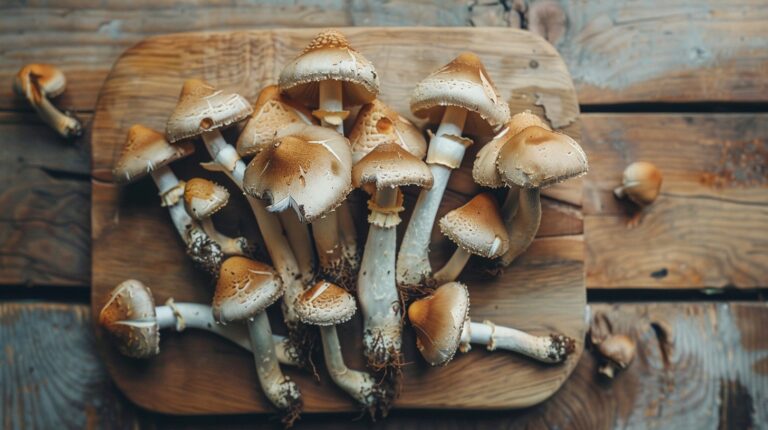Psilocybin or magic mushroom is a naturally occurring substituted tryptamine that features an indole ring linked to an aminoethyl substituent.
It is structurally related to serotonin, a monoamine neurotransmitter that is a derivative of the amino acid tryptophan.
This classic hallucinogen is a chemical produced by more than 100 species of mushrooms worldwide.
It has a high affinity for several serotonin receptors, including 5-HT1A, 5-HT2A, and 5-HT2C, located in numerous areas of the brain, including the cerebral cortex and thalamus.)1
Are they legal? What are the effects?
If you’re curious about it, here’s what to know about the benefits and risks of magic mushrooms.
Ask people who’ve tried so-called “magic mushrooms” what the experience was like, and many will tell you it’s life-changing.
Turns out, those aren’t just the ravings of a hallucinogenic mind.
In fact, a growing group of researchers is excited about the potential benefits of this chemical, the primary hallucinogenic compound in ’shrooms, which is showing a lot of promise for helping people overcome hard-to-treat (or treatment-resistant) and life-disrupting conditions like addiction and major depression.
Yet since 1970, psilocybin has been classified as a Schedule 12 illicit drug, which is defined as having no currently accepted medical use in the US, as well as a high potential for abuse.
| Positive Effects | Side Effects |
|---|---|
| Shows potential in treating addiction, depression, and anxiety disorders | Potential for misuse and negative emotional experiences |
| Can change how the brain processes certain disorders | Physical health risks with chronic use |
| Has a high affinity for several serotonin receptors in the brain | Illegal in many places and classified as a Schedule 1 drug in the US |
| Currently being researched for therapeutic use in controlled settings | Can cause intense emotional experiences that may be distressing |
| May lead to altered perceptions, euphoria, and a dream-like state | Can cause tachyphylaxis, diminishing the drug’s effects over time |
Strange Trip Through Time
R. Gordon Wasson, an American banker, and mushroom enthusiast was vacationing with his wife in Mexico in 1955 when they became the first outsiders to participate in the Mazatec Indians’ sacred mushroom rituals with a healer named Maria Sabina.
He brought some of the mushrooms back to his home in New York City and later shared his experience in Mexico in a Life magazine article published in 1957 when LSD—a chemically similar psychedelic but about 1000 times more potent—was already being studied for its ability to treat alcoholism and other psychiatric illnesses. (A 25 mg dose of psilocybin is equivalent to approximately 250 micrograms of LSD.)
Three years later, two Harvard psychologists—Timothy Leary and Richard Alpert—began to explore how cognition, perception, and emotion are impacted by psychedelic drugs.
They started the notorious Harvard Psilocybin Project3, which involved administering this chemical to student volunteers to document its effects. Bear in mind, that psilocybin and LSD were legal then, but both Leary and Alpert were also tripping during their experiments, which ultimately got them fired in 1963.
By now, psychedelics were gaining a reputation in mainstream culture as being dangerous. Numerous states began banning their use, and in 1970, Congress passed the Controlled Substances Act and classified both psilocybin and LSD as Schedule 1 drugs.
With both now illegal, funds for research on psychedelics disappeared and research slowed to a drip.
But it didn’t stop altogether, and decades of findings slowly accumulated, showing the benefits of this chemical.
In 2018, the FDA took note of studies looking at its ability to ease treatment-resistant depression, and designated it as a Breakthrough Therapy4, a classification that indicates significant therapeutic potential, and fast-tracked the development and review process.
Another sign of its potential as a clinical treatment: Johns Hopkins University launched the Center for Psychedelic & Consciousness Research5 in September 2019, where research continues to reveal psilocybin’s therapeutic effects.
A small handful of other, reputable centers for psychedelic research have also cropped up including the Center for Neuroscience of Psychedelics at Massachusetts General Hospital and the Imperial Psychedelic Research Programme at Imperial College London.
What the Research on Psilocybin Therapy Shows
What’s most interesting about psilocybin is its ability to address a few different types of conditions.
“The most promising potential is for addiction—smoking, alcoholism, cocaine,” says Matthew W. Johnson, PhD, a professor of psychiatry at Johns Hopkins University and associate director of the Center for Psychedelic & Consciousness Research.
His ongoing pilot study on nicotine addiction has found that 80% of participants who underwent psilocybin therapy quit smoking, and 60% of them were still abstinent 16 months later—impressive compared to the 35% success rate of varenicline6, the most effective of other smoking cessation therapies.
“The idea that something could be efficacious for multiple substances is, itself, very atypical and exciting,” says Johnson. “There’s a very good case that psilocybin can treat the psychology of addiction, not just alleviate the withdrawal symptoms and reduce cravings.”
In addition to treating addiction, this chemical has also shown impressive results in treating depression and death anxiety.
For instance, one small recent study published in JAMA Psychiatry7 found that patients with major depressive disorder experienced significant improvement after being treated with psilocybin in combination with psychotherapy, and more than half were in remission four weeks afterward.
“The most advanced work is with patients with life-threatening cancer, where we saw dramatic reductions in depression and anxiety that showed persistent benefits six months later, which is extremely atypical,” says Dr. Johnson.
Beyond those applications, researchers are also looking at psilocybin for anorexia, Alzheimer’s (related to both depression and cognitive decline), post-traumatic stress disorder, demoralization syndrome (suffering characterized by feelings of hopelessness and loss of purpose/meaning in life) experienced by long-term HIV survivors, and obsessive-compulsive disorder.
“We don’t have the answers yet, but I would say they’re good bets,” says Johnson.
How Psilocybin Works?
Psilocybin quite alters brain communication, unlocking underutilized neural pathways and increasing connectivity across different brain regions8.
This process reduces the activity of the Default Mode Network, which is associated with self-reflective thoughts, and allows for a more open and less organized way of neural interaction, leading to profound changes in mood, perception, and behavior.
The result is a potential reshaping of one’s sense of reality, with increased feelings of openness, love, and compassion.
This shift could be crucial for treating conditions marked by rigid patterns of thought and behavior, such as depression and addiction, by offering new perspectives and facilitating significant behavioral change.
What Happens During a Psilocybin Therapy Session?
During a psilocybin therapy session, only available legally in Oregon or through clinical trials due to its federal illegal status, participants undergo a rigorous screening process to minimize risks, especially for those with a history of psychotic conditions9.
In a controlled setting, individuals receive a calculated dose of synthetic psilocybin to induce a profound experience, while a trained therapist ensures the safety and guides the participant through the session, which can last 6 to 8 hours.
This experience is complemented by soothing music and a focus on internal reflection aimed at confronting and transforming negative behaviors and emotions.
Critical to the process is the integration phase, where participants work with therapists post-session to understand and apply the insights gained to their lives, potentially leading to significant personal growth and change.
Psilocybin Risks: Important to Know
While psilocybin has been identified with only mild addiction potential and less inclination to induce compulsive use compared to traditional addictive substances, it’s not without risks.
It can be misused, leading to dangerous situations such as accidents or risky behavior. Negative or intensely emotional experiences are possible, highlighting the need for thorough preparation and professional guidance during use.
Repeated use may lead to tachyphylaxis, diminishing the drug’s effects over time.
Moreover, long-term usage poses cardiovascular risks10 due to its interaction with specific heart receptors, cautioning against frequent consumption.
These aspects underscore the importance of cautious, informed, and supervised use of psilocybin.
FAQs
Summary
Psilocybin, which is found in magic mushrooms, turns out it’s got some pretty interesting potential for helping people with mental health issues like addiction, depression, and anxiety.
The research shows that it changes how the brain processes these disorders, which is pretty amazing! But, as with most things, there are some risks involved.
For one, there’s the potential for misuse, and people can have some pretty intense emotional experiences that aren’t always positive. Plus, if you use it too much, there can be some physical health risks.
So, it’s really important to weigh the potential benefits against the risks when it comes to using this chemical in therapy and research.
We want to make sure we’re using it safely and responsibly that help people without causing harm.
References
1. Jeremy Daniel, PharmD, BCPS, BCPPcorresponding author1 and Margaret Haberman, PharmD, BCPP2. (2018). Clinical potential of psilocybin as a treatment for mental health conditions. (https://www.ncbi.nlm.nih.gov/pmc/articles/PMC6007659/)
2. The Drug Enforcement Administration (DEA). (https://www.dea.gov/drug-information/drug-scheduling).
3. Timothy Leary. The Effects of Psychotropic Drugs. (https://psychology.fas.harvard.edu/people/timothy-leary)
4. The United States Food and Drug Administration. Breakthrough Therapy. (https://www.fda.gov/patients/fast-track-breakthrough-therapy-accelerated-approval-priority-review/breakthrough-therapy)
5. Johns Hopkins, the Center for Psychedelic and Consciousness Research. 2019. (https://hopkinspsychedelic.org/)
6. The National Library of Medicine (NLM). MedlinePlus. (https://medlineplus.gov/druginfo/meds/a606024.html)
7. Alan K. Davis, PhD; Frederick S. Barrett, PhD; Darrick G. May. Effects of Psilocybin-Assisted Therapy on Major Depressive Disorder. 2020. (https://jamanetwork.com/journals/jamapsychiatry/fullarticle/2772630)
8. Carey Rossi. This Is Your Brain On Addiction. 2022. (https://www.psycom.net/addiction-whats-happening-in-the-brain)
9. Robin Lester Carhart-Harris, Leor Roseman, Eline C.H.M. Haijen, David Erritzoe. Psychedelics and the essential importance of context. Journal of Psychopharmacology. 2018. (https://www.researchgate.net/publication/323211736_Psychedelics_and_the_essential_importance_of_context)
10. Kelan Thomas, PharmD, MS, BCPS, BCPP. Why Chronic Microdosing Might Break Your Heart. 2019. (https://chacruna.net/why-chronic-microdosing-might-break-your-heart/)
Related Posts:
- Can Hyperbaric Chamber Help with Anxiety and Mental…
- Depression vs. Manic Depression: Battle of the Moods
- Bible Verses for Anxiety and Depression -…
- 7 Ways Video Self-Modeling Can Help Your ASD Child
- Gender Roles and Their Impact on Depression: Beyond…
- Symptoms, Causes and Effects of Chronic Depression:…

